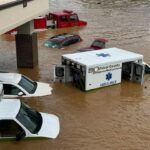
Are you prepared for an emergency? Whether it’s a natural disaster, power outage, or other unforeseen event, having a Get Home Bag can be a lifesaver. But what is a Get Home Bag and what should be in it?
A Get Home Bag is a pre-packed emergency kit that is designed to help you get home safely in an emergency situation. Unlike a bug-out bag, which is meant for long-term survival, a Get Home Bag is meant to be used for a shorter period of time, typically 24-48 hours, to get you back to your home or a safe location.
Why do you need a Get Home Bag?
You may be wondering why you need a Get Home Bag if you already have a bug-out bag or other emergency kit. The truth is, a Get Home Bag is essential because disasters can strike at any time and you may not always be at home or in a safe location. A Get Home Bag can be a crucial tool in helping you navigate through an emergency situation. Here are some reasons why you need a Get Home Bag:
- Power Outages – If you live in an area that is prone to power outages, having a Get Home Bag can help you navigate your way home safely.
- Natural Disasters – In the event of a natural disaster, such as a hurricane or earthquake, a Get Home Bag can help you stay safe and prepared until help arrives.
- Civil Unrest – In times of civil unrest or social unrest, having a Get Home Bag can help you safely navigate your way home.
- Car Trouble – If your car breaks down, or you slide off the road, you need to make it to safety, which could mean leaving your car. Having a Get Home bag in your car could make that effort a lot easier.
What should be in a Get Home Bag?
When packing your Get Home Bag, you want to focus on items that will help you survive for 24-48 hours and get you back home safely. Here are some essentials that you should include:
Water and hydration
- Two Nalgene Water bottles, filled with water
- Water filter or purification tablets
- Electrolyte replacement packets
Food and nutrition
- High-energy snacks (e.g., energy bars, nuts, dried fruits)
- Emergency food rations
- Canned food
- Candy – for Sugar and Morale
- Portable stove and fuel, with a small camp pot.
- Eating utensils
Shelter and warmth
- Lightweight, waterproof tent or tarp
- Sleeping bag or bivvy sack
- Emergency blankets or space blankets
- Hand warmers or body warmers
Clothing
- • Update the clothing to be season appropriate
- • Good hiking shoes
- • Pants, shirt, and a waterproof jacket
- • Underwear and socks
- • Gloves and a hat
Navigation and communication
- Compass and maps
- GPS device or smartphone with maps app
- Emergency whistle or signaling device
- Portable battery charger and cable for electronic devices
First aid and personal hygiene
- First aid kit with essential supplies
- Prescription medications
- Personal hygiene items (e.g., hand sanitizer, wet wipes, toilet paper)
- Sunscreen and insect repellent
- Toothbrush, toothpaste, mouthwash
Protection and self-defense
- Pepper spray or stun gun where legal
- Other weapons as desired…
Tools and Supplies
- • Multi-tool and knife
- • Flashlight or headlamp with extra batteries
- • Fire starter, matches, lighter.
- • Duct tape and paracord
- • Cash and a credit card
- • Note pad and Sharpie
FAQs
1. How much should a Get Home Bag weigh?
A Get Home Bag should be lightweight and easy to carry. It’s recommended that a Get Home Bag weighs no more than 20% of your body weight.
2. Can I use a regular backpack for my Get Home Bag?
Yes, you can use a regular backpack for your Get Home Bag. However, it’s recommended that you use a backpack that is durable and has enough room to carry all of your essential items.
3. How often should I update my Get Home Bag?
It’s recommended that you update your Get Home Bag every six months. Check the expiration dates on food and medications, and replace any items that have expired.
4. Can I customize my Get Home Bag?
Yes, you can customize your Get Home Bag to fit your specific needs and situation. However, make sure that you include all of the essential items listed above.
5. How do I store my Get Home Bag?
Store your Get Home Bag in a dry place, inside the cab or trunk.
It is our mission to educate, equip, and empower everyday ordinary civilians to understand, prepare for, and survive any emergency they face. We cannot rely on the government to take care of us. We must take it upon ourselves to provide for and protect ourselves and our families.
Note: I am an affiliate with Amazon and may receive a commission from products purchased from Amazon. This helps me continue to put out emergency preparedness information for you.






